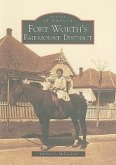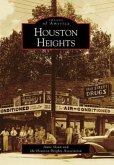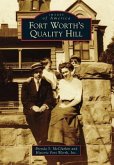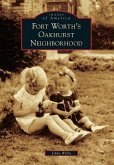On the prairie west of Fort Worth, British-born Humphrey Barker Chamberlin commissioned a model mansion, grand hotel, trolley line, lake, and waterworks in the early 1890s. He launched Chamberlin Arlington Heights as an opulent suburb reminiscent of his Capitol Hill enclave in Denver, then lost his overextended empire in the silver panic of 1893. Although several more well-to-do families established homes near those of the original "Heights pioneers," development progressed slowly. With the coming of World War I, local leaders persuaded the U.S. Army to build Camp Bowie across much of the sparsely settled area, providing infrastructure. A bungalow boom followed, with housing additions for the middle class and annexation by Fort Worth. As the 20th century drew to a close, preservationists sought protection for the legacy of built treasures within the neighborhood.
Hinweis: Dieser Artikel kann nur an eine deutsche Lieferadresse ausgeliefert werden.
Hinweis: Dieser Artikel kann nur an eine deutsche Lieferadresse ausgeliefert werden.








